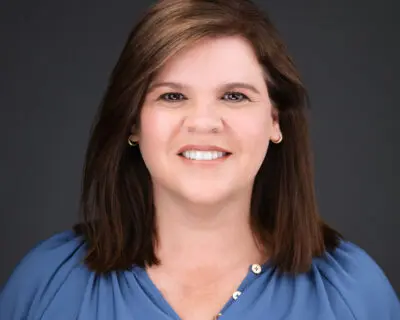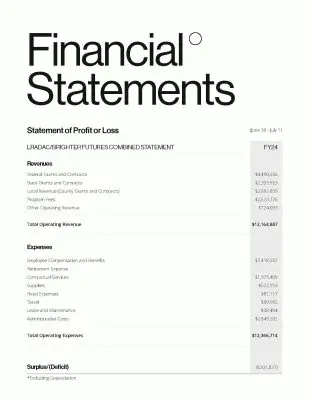About LRADAC
Lexington/Richland Alcohol and Drug Abuse Council
Improving Lives.
Improving Communities.
LRADAC, formerly referred to as The Lexington/Richland Alcohol and Drug Abuse Council, cares for the needs of the citizens of Lexington and Richland counties of South Carolina. We offer a wide array of prevention, intervention and treatment programs in locations convenient to residents of both counties.
With a dedicated staff and innovative programs and services, LRADAC takes a proactive approach to fighting addiction and drug misuse in our schools, businesses and neighborhoods. We tailor our programs to meet the ever-changing needs of the communities we serve. Our prevention, intervention and treatment programs spread the message that there is hope and that substance misuse and addiction are preventable and treatable.
LRADAC is a non-profit agency. We are also one of 33 county alcohol and drug abuse authorities recognized by the state of South Carolina. This network of direct service agencies provides prevention, intervention and treatment programs to citizens in all 46 counties of the state. More than 50,000 South Carolinians receive direct intervention or treatment services through county authorities each year. Last year, LRADAC alone served more than 5,000 patients.
*All LRADAC campuses are nicotine-free.
Click on the items below to read more
Leadership

LRADAC is overseen by a 12-member Board of Directors, six of whom are appointed by the Richland County Council and six by the Lexington County Council. Wendy Hughes is the President and Chief Executive Officer of LRADAC.
She has 20 years of experience in non-profit and healthcare administration, including 13 years as Vice President and CFO at LRADAC.
Hughes graduated from the University of South Carolina in 1995 and obtained her MBA from USC in 1999. She started her career in direct care for children at Epworth Children’s Home and later worked as a case manager intherapeutic foster care. In addition to her role at LRADAC, Hughes is a surveyor for the international accrediting body CARF and a graduate of Leadership Columbia.
Board of Directors
| Chairperson | Joshua D. Fabel, Richland County Sheriff’s Department |
| Vice Chairperson | Cindy Blakeney, Retired |
| Secretary | Jeff Sarokas, Lowcountry Billing Services |
| Treasurer | Buddy Wilson, Coldwell Banker |
| Board Members | Lynn Dooley, City of Cayce Carole Farrar – River Bluff High School Crystal Marks – Universal Health Services Salley Rickenbacker-Robinson – Healthcare Sales Bruce Smith – JK Smith, Inc. Harry Ward – Cushman-Ward Financial Consultants Maryann Wright – Retired Bootsie Wynne – Lexington Medical Center |
Outcomes From Services
LRADAC monitors data, outcomes, and progress in order to gauge success, as well as to identify those areas needing improvement. Based on this data, recommendations/modifications are implemented that will improve service delivery capability that best meets the needs of the patients and the community. In addition, gathering information from key stakeholders is an integral piece of the planning process. Input is gathered on an ongoing basis from patients, family members of patients, personnel, and other stakeholders using a variety of mechanisms including outcome surveys, focus groups, and advisory committees to name a few.
Strategic Alignment
Strategic planning is an ongoing process that takes into consideration many different factors. Information is gathered, analyzed, and reviewed from a variety of sources. The Board of Directors oversee the strategic planning process but rely heavily on the management team to evaluate and consider many different factors in the development of the plan. The management team continually seeks information from front-line workforce and managers who work daily to serve patients and their families, as well as the patients and communities served by the Organization.
A variety of external factors are considered in the development of the plan including expectations of funders and other stakeholders, as well as referral sources and agencies who serve mutual patients. Information shared by our patients, and their families through surveys and focus groups is collected and reviewed throughout the year by the Continuous Quality Improvement, and Customer/Consumer Advocacy Committee. Patient and consumer feedback are summarized and reviewed for trends that are addressed as part of the continuous quality improvement process and considered during the strategic planning process. Information that is shared from organizations that have a relationship with LRADAC, such as referral sources, funders, or gathered from our Community Partners Committee, provide valuable information on service area needs, gaps in services and barriers to services. The feedback received also provides an important picture of their perceptions regarding the organization’s service access, provision, and effectiveness.
Management considers the current competitive climate, along with new or proposed regulatory and legislative initiatives, that may seriously impact the organization’s ability to provide its current menu of services and/or the addition of new programs or services. In addition to these factors, planning takes into consideration the organization’s capabilities, changes in demographics to the organization’s service area, and other social determinants impacting patients and staff including transportation, access to healthcare, social support, and inclusivity to name a few. Financial threats and opportunities are also carefully considered as to their impact on the financial stability of the organization and how these will impact program and service capabilities.
The organization utilizes technology, including the electronic health record and other data collection tools, to support effective service delivery, effective operations and, enhancement to data collection capabilities. Through Continuous Quality Improvement and data collection and analysis we gain valuable insight and analysis to provide a full picture of the organization’s service area and patient demographics. Service data is reviewed monthly and includes: unique patients served organization-wide and by program, organization and program patient demographics, trends on substances used, increases and decreases in kept activities, patient ages, county of residence, zip codes with highest patient volume, unique patient Medicaid/MCO claims per month, claims by activity, marketing insurance trends, perception of care and outcome survey data. Quality of Life (QOL) questions from outcome surveys help assess patients’ thoughts regarding their quality of life in general, ability to manage their life, insight into substance use, ability to handle crises and their responsibilities, and their degree of alcohol and other substance use post-discharge. Data collection regarding service delivery is another way that technology supports performance improvement. Data is collected to assist management is evaluating services through the prism of access, effectiveness, efficiency, and satisfaction. Information from the analysis of performance is utilized to create action steps for improvements. Analysis of the data provides important insight to the effectiveness of initiatives that support the strategic alignment areas of customer, finance, process, and capacity. Within each of these plans, priorities, goals, objectives/initiatives, and evaluation measures are set.
As the strategic plan is being created, a budget, to allocate resources toward accomplishment of the plan, is being developed. The budget reflects the Organization’s financial position at the time the plan is written and considers various projected points in the future. In addition, great care is taken in planning for the allocating of resources necessary to support the financial and workforce needs needed to accomplish the goals and priorities set by the organization leadership. The budget and subsequent strategic initiatives are updated as needed. Budgets are reviewed monthly and adjusted as revenues and expenses are evaluated. Goals and priorities are set, implemented, updated as needed and reviewed throughout the year for relevancy.
The plan is reviewed with key stakeholders including the Board of Directors. These reviews happen three times during the year when the plan’s progress is presented to by the Leadership to the Strategic Planning Core Committee for review. This Board Committee provides oversite and shares findings with the full board at these same intervals. Also, the strategic plan and outcome information is shared with personnel through organization committees/meetings and the Organization’s intranet. Statistical data and outcomes are shared with various stakeholders/funders. In addition, the communities, and patients we serve have access to strategic outcomes via the Organization’s website and fiscal year annual report. LRADAC develops and/or revises the strategic plan and blueprint for the organization to move proactively forward in current and future years.
Mission, Vision, Purpose & Values
Agency Vision
To build a community that embraces recovery and become the preferred provider of substance misuse prevention, intervention and treatment services.
Agency Mission
LRADAC creates and supports pathways for prevention and recovery from substance misuse for individuals, families and communities.
Our Purpose
Improving Lives. Improving Communities.
LRADAC’s Core Values
Creativity: Seeking and developing unique ways to build relationships and deliver services.
Integrity: Upholding the moral standards and values that provide for open, honest and ethical practices.
Teamwork: Working together with patients, staff, and communities to achieve common goals.
Compassion: Being open and empathetic. Understanding, nurturing and caring for our patients and staff.
Accountability: Operating in an open and transparent manner that demonstrates credibility, responsiveness and effectiveness.
Respect: Treating all people with dignity, fairness, kindness and understanding without bias.
Diversity: Embracing differences to enhance approaches and outcomes.
Ownership: Personally investing in the success of the organization through our commitment, dedication and performance.

